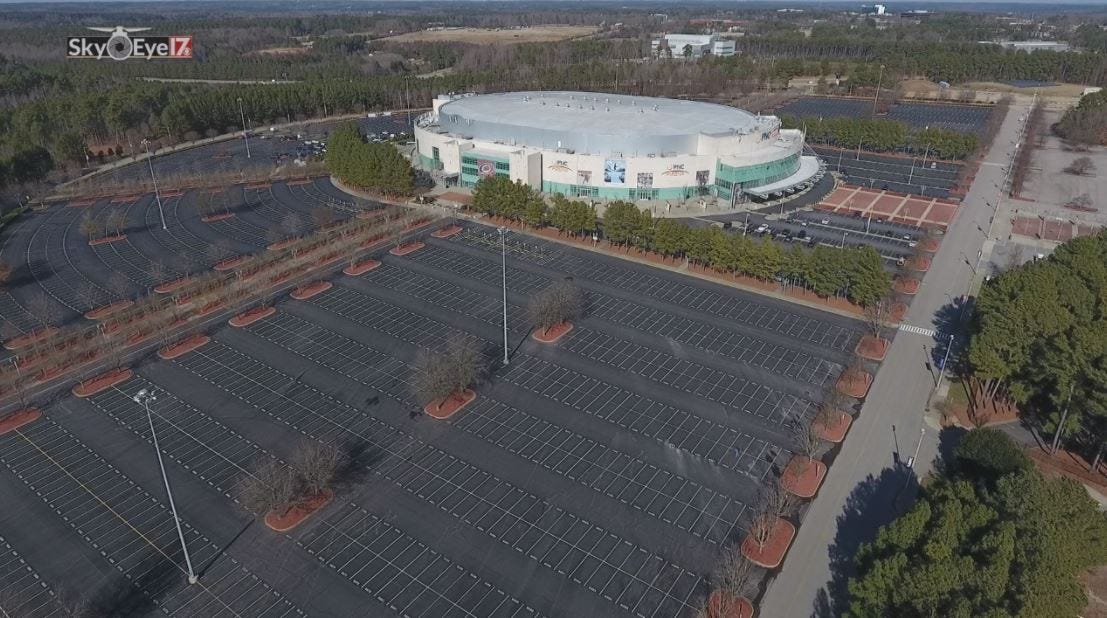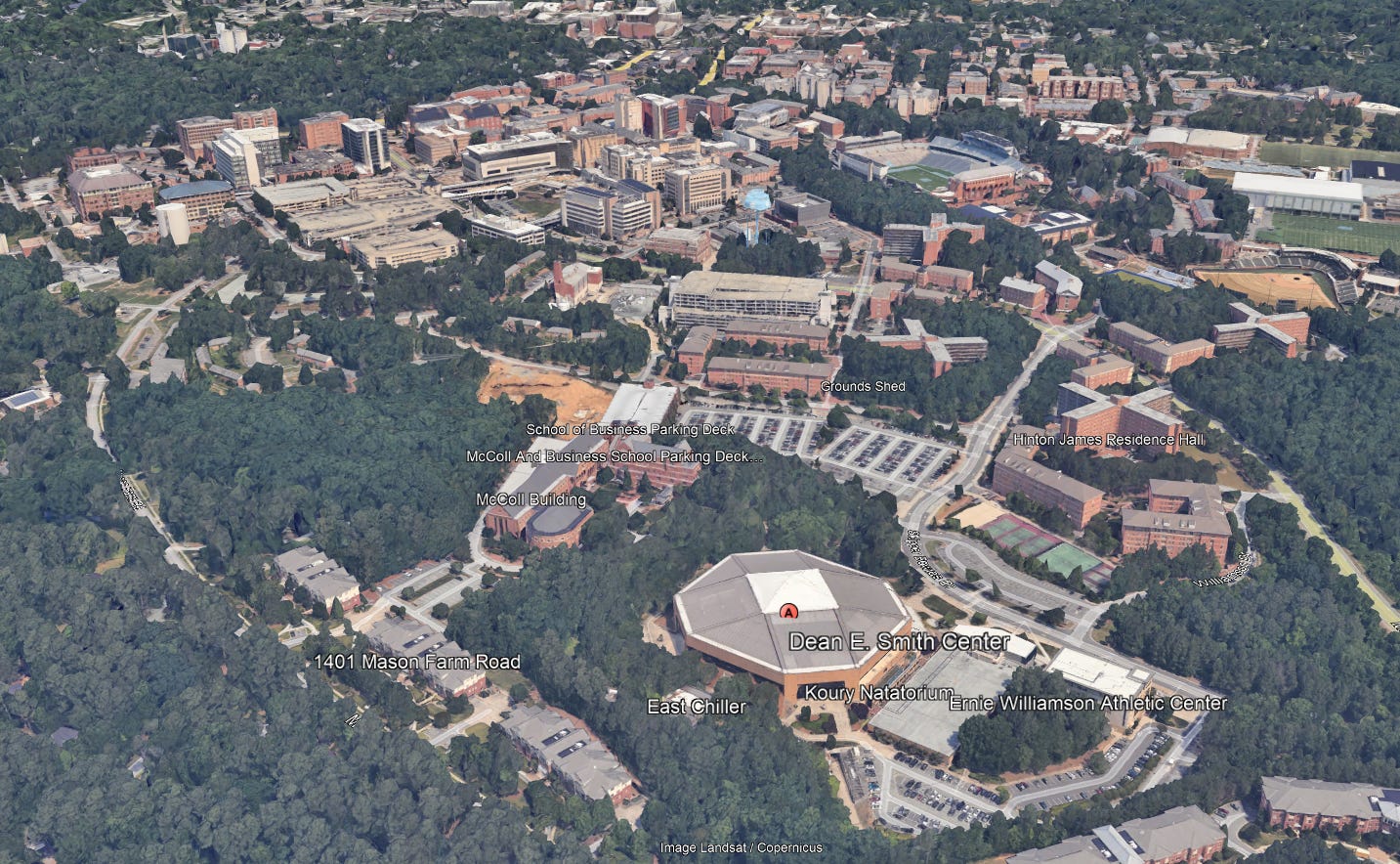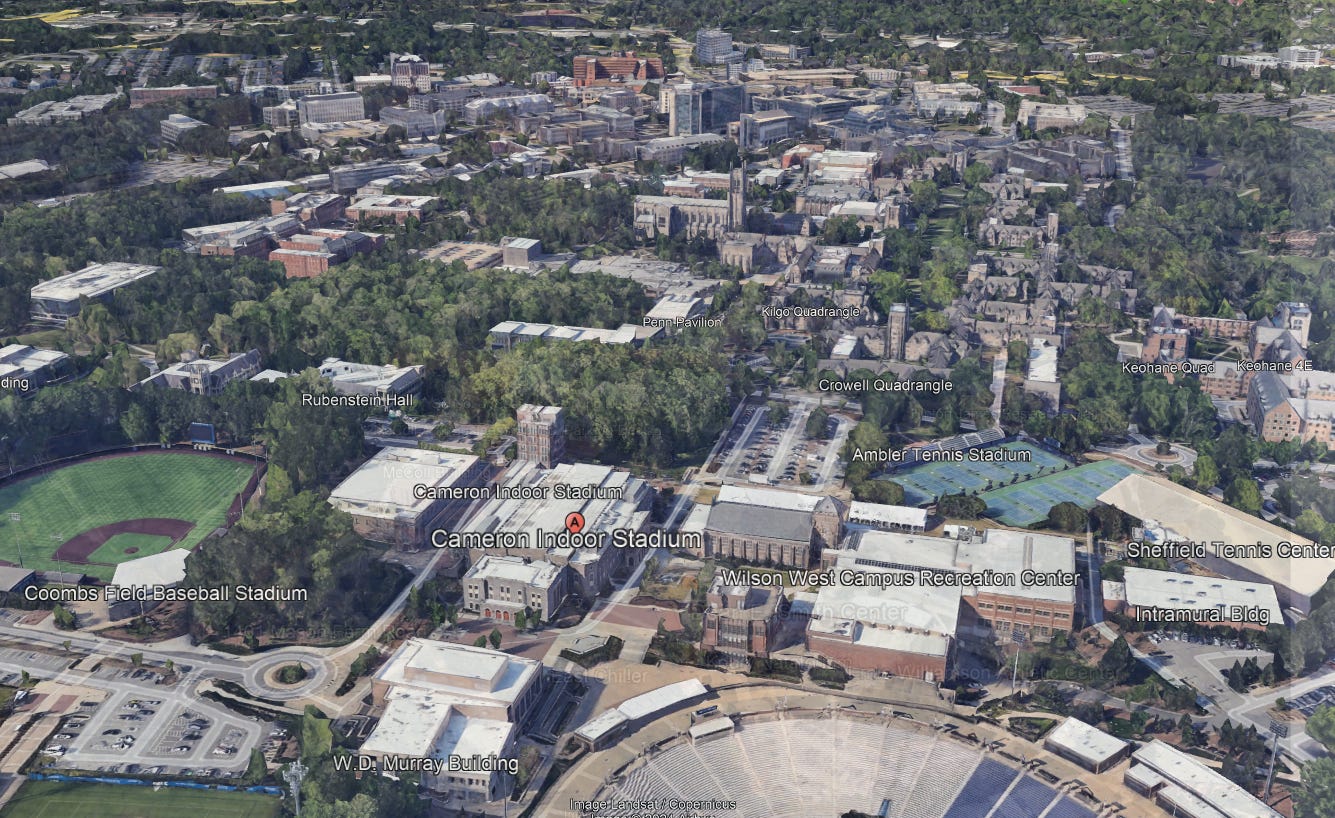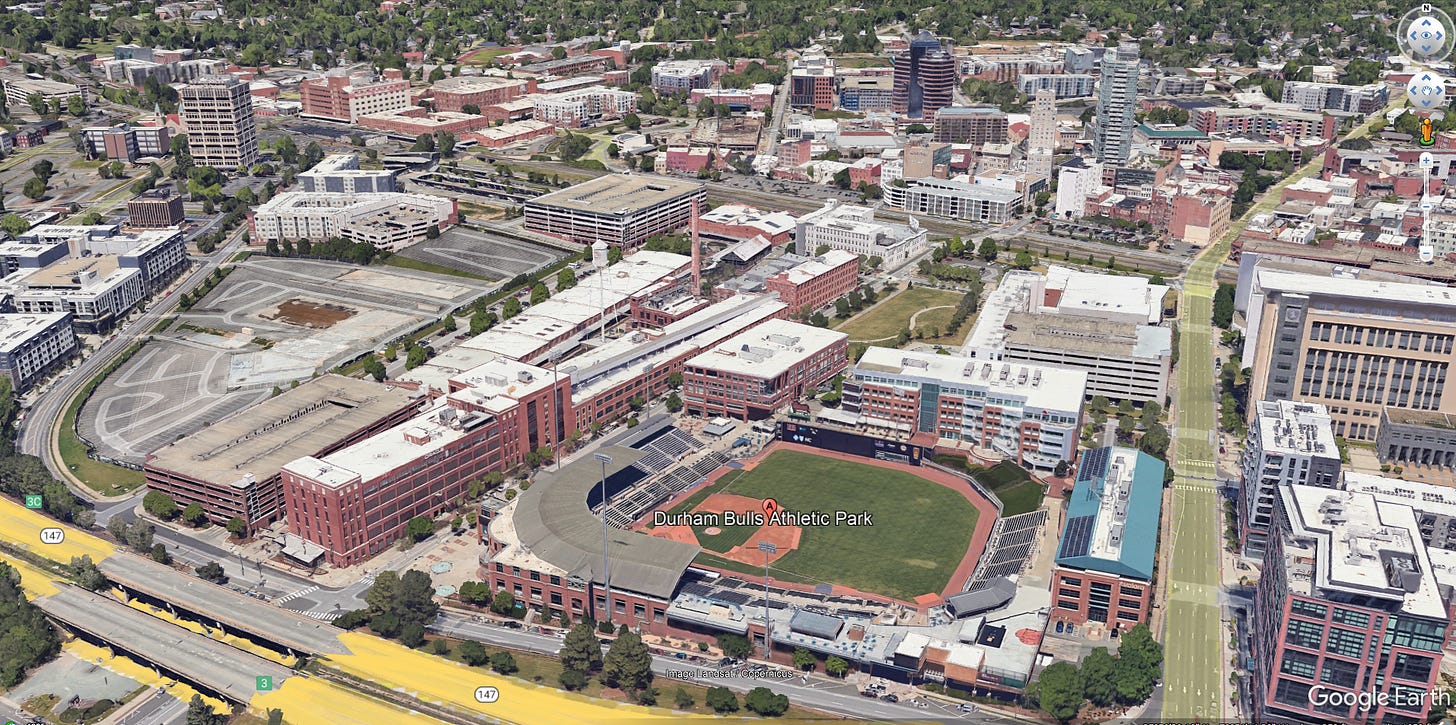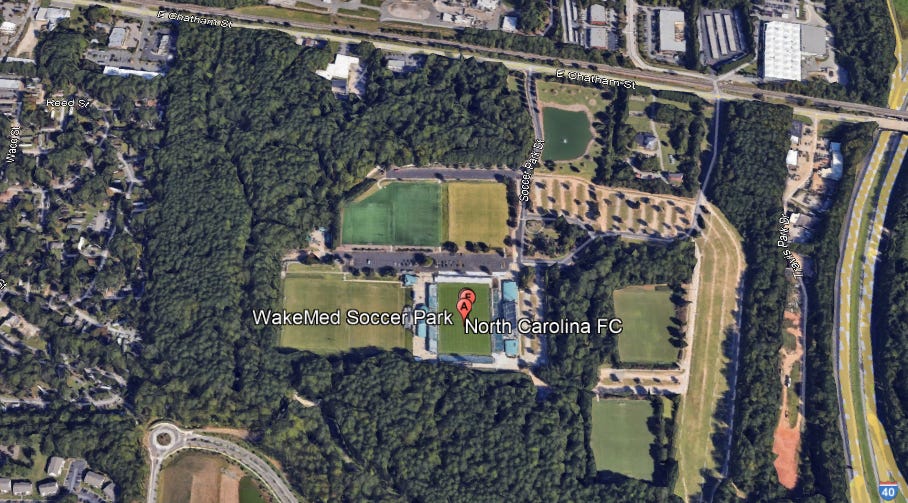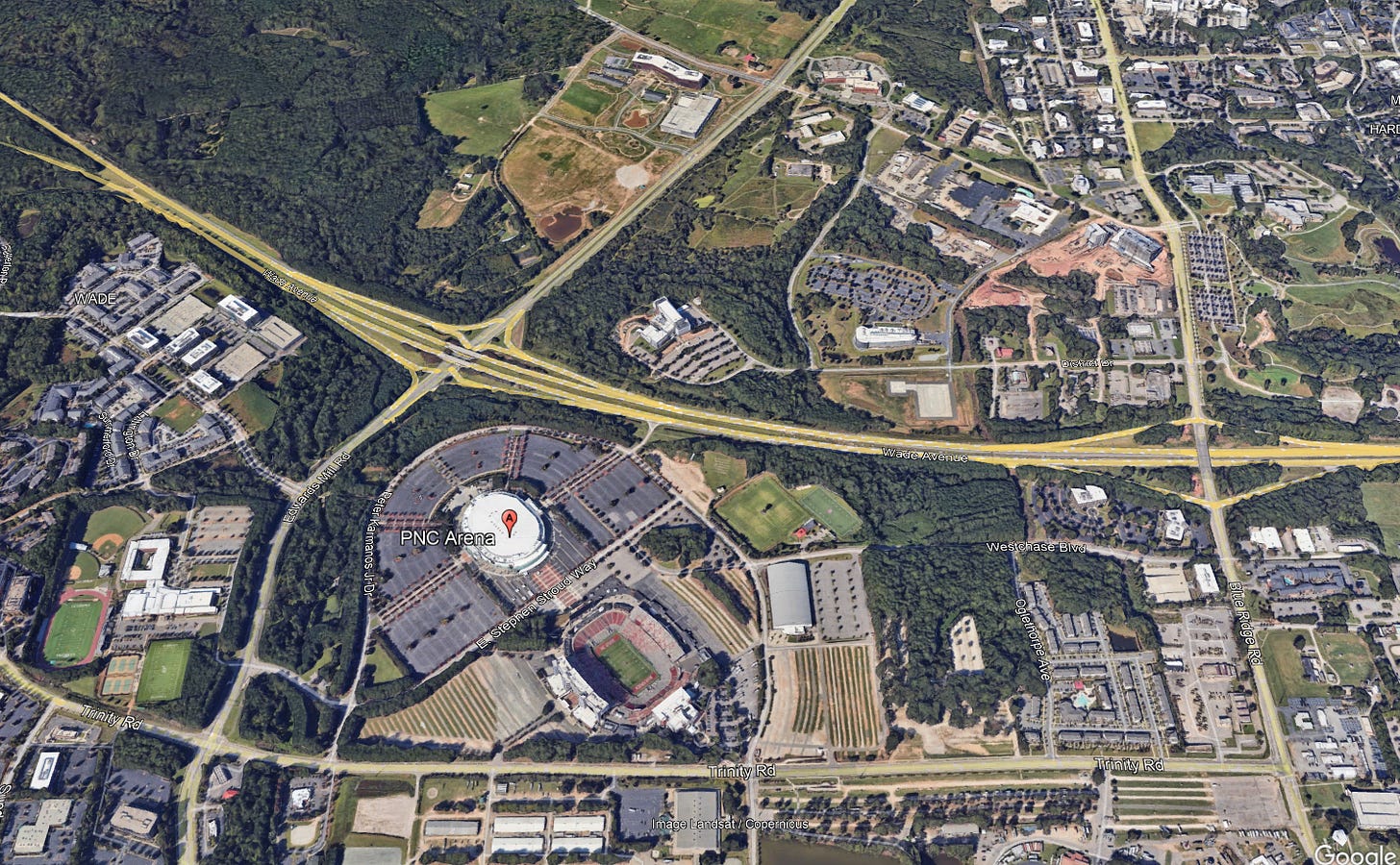Ranking Raleigh-Durham's Stadiums for Urbanism and Walkability
Can humans exist near our stadiums?
My West Coast rabblerousing counterpart over at @pushtheneedle recently shared a compelling post that graded each Major League Soccer (MLS) stadium on the quality of their urbanism. The post quickly attracted over 500,000 views, highlighting the significant issue of car dependency associated with these iconic civic structures.
Inspired by Ryan's work, I've decided to apply a similar analysis to the stadiums in Raleigh, Durham, and Chapel Hill.
Before diving into the rankings, here are some key points to consider:
When did our most prominent civic buildings start requiring a combustion engine to see them?
Ryan's analysis reveals that only 3 out of the 29 cities with MLS stadiums received 'A' grades for urbanism. The final grades underscore the prevalence of car-centric planning in all but a few locations.
Using MLS stadiums as a benchmark is particularly effective for this discussion. These stadiums are generally smaller, with all but five having capacities under 30,000—about a third of the largest football stadiums and half the size of the biggest baseball parks. This smaller scale challenges the notion that massive parking lots are necessary for accommodating fans.
The Southern United States is the most disconnected, most populated, and least urbanized region, making it more likely to have poor urban stadium sites.
However, the South also represents the world's biggest sprawl repair project, with professional sports stadiums as the potentially most transformative components in this exercise. Despite its sprawl, the South has numerous less-developed infill opportunities for stadium development, more so than cities like San Francisco, Chicago, or New York.
As the South grows, it will attract more professional sports teams and see colleges relocate their stadiums. These arenas' strategic placement and development present a unique opportunity for citybuilding.
Now, let's grade the stadiums in the Triangle area on the quality of their urbanism:
UNC Tarheels, Dean E Smith Center | Kenan Memorial
C+ (bad design is salvaged by proximity to UNC)
UNC's stadiums are only walkable because they're adjacent to a college campus. Parking surrounds The Dean Dome, adjacent to poorly designed Corbusier housing towers on bad sites. It's indicative of the 1970s-1980s when these buildings were conceptualized. There are no bars, restaurants, or private housing anywhere near.
Duke Blue Devils, Cameron Indoor | Wallace Wade
B (great site & traditional form)
Also on a college campus, Duke's stadiums are nestled in a dense traditional site plan at the edge of the primary campus, with no significant loss of place due to excessive parking (in fairness, the Dean Dome has almost 2.5x the seating). Still, there are no restaurants or bars anywhere close. And Duke alumni all have to take motorized transport to attend.
Durham Bulls, Durham Bulls Athletic Park
A (great site & adaptive execution)
Part of the world-class American Tobacco Campus redevelopment, it is walkable, near housing, and designed with excellent user experience and viewsheds. The only thing that could be better is the redevelopment of the Housing Authority parcel to the South.
North Carolina FC|Courage, Cary WakeMed Soccer Park
F (Nothing urban about it.)
It's an exurban site in the middle of the suburbs. Nothing is near. It is 100% car-dependent. Cary could develop a fantastic intentional development for soccer enthusiasts, doubling down on the world-class execution of its downtown park. But as of right now, WakeMed Soccer Park is a bunch of fields and parking. To my knowledge, nothing is planned.
NC State Wolfpack | Carolina Hurricanes, PNC Arena | Carter-Finley
D (but could be an A.)
Among the major stadium sites, PNC is the worst but could be the best. Currently, PNC is two large stadiums in an ocean of surface parking; the site is ideally located between Raleigh and Cary and should be a prime development spot for new placemaking in the Triangle. Notably, the NCRR corridor is adjacent, and should the region ever get its act together on rail, PNC would be an obvious stop on the line. If we ever got serious about citybuilding, I could see 100,000 people living and working here.
The final rankings?
A Durham Bulls, Durham Bull Athletic Park
B Duke Blue Devils, Cameron Indoor | Wallace Wade
C+ UNC Tarheels, Dean E Smith Center | Kenan Memorial
D NC State Wolfpack / Carolina Hurricanes, PNC Arena, Carter-Finley
F North Carolina FC|Courage, Cary WakeMed Soccer Park
There is lots of work to do, and lots of opportunity to do it!



